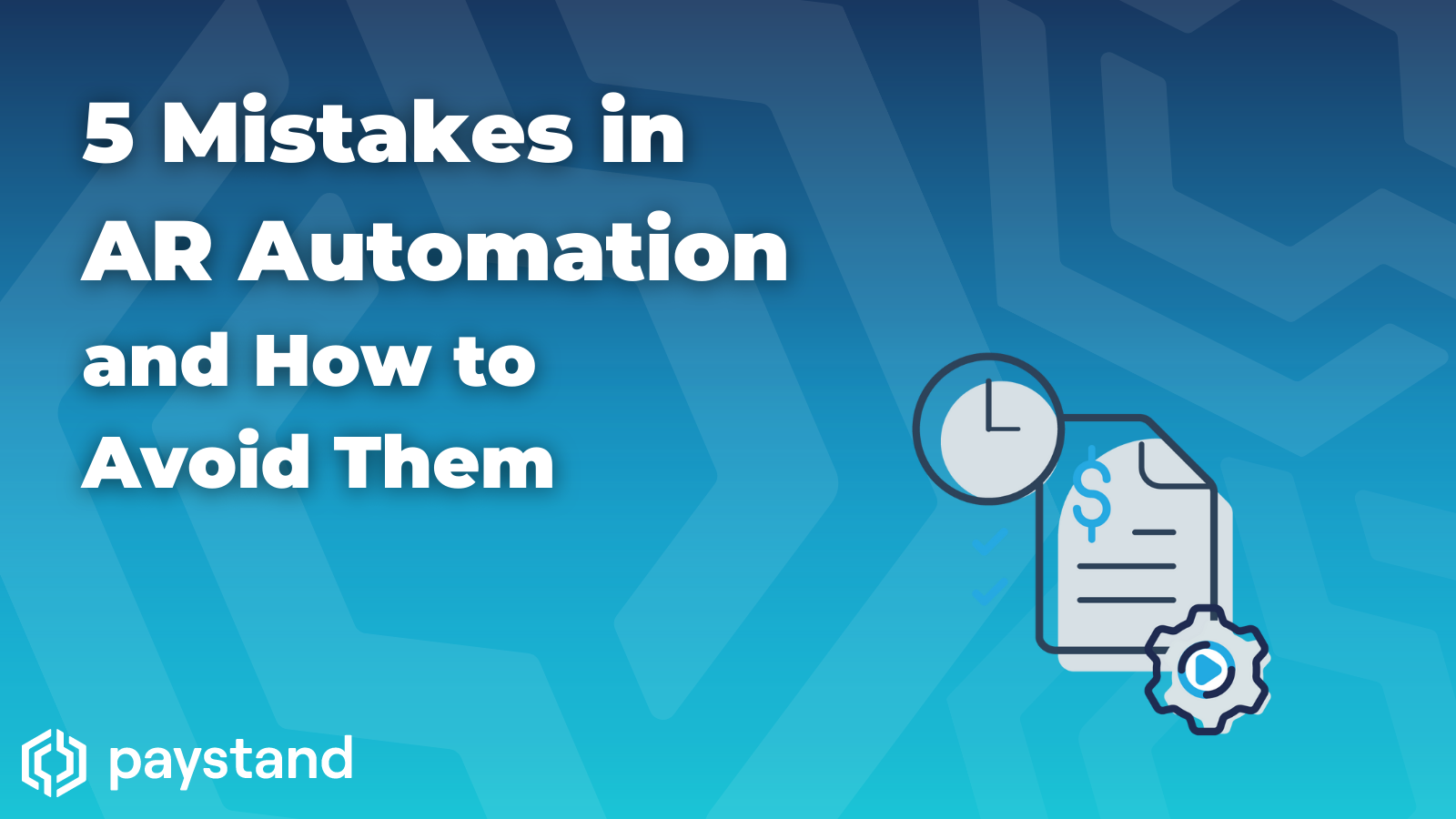5 Mistakes in AR Automation and How to Avoid Them

AR automation is a great way to increase your cash flow and free up time so you can focus on growing the business. However, there are common mistakes that you should avoid when implementing automation in your business that need careful consideration so they don't disrupt ongoing workflows. Keep on reading to learn about these mistakes and how to avoid them.
1. Not Automating At All
Adopting automation can be tricky, but the worst possible automation mistake you could make is not automating at all. Fear of making mistakes is one of the main reasons we don't try something new. It’s an understandable instinct, but reluctance to embrace automation as a tool to optimize AR processes can greatly setback your business growth and customer satisfaction.
Automating your AR process will have a significant impact on every aspect of your business, including operations and financial management. Once it's implemented you'll see vital business benefits such as:
- Reduced costs
- Spending less time on each task
- Minimizing errors
- Improving accountability
- Reducing work stress
- Generating analytics and metric reports
Automation is a great way to maintain balance and remove repetitive tasks from your daily workflow. It also allows you more time for important projects or activities while providing quality results.
2. Thinking Automation Will Do Everything
The idea of automation doing everything for you sounds pretty magical, but acquiring an automation platform and expecting it to cover all your processes in just one click, is still farfetched.
Automation should be an extension of established processes that adds long-term value by saving resources. To understand what needs to be automated and make an optimal integration, you need to outline the process and break it into straightforward actions that occur on a smaller level, focusing on problem-solving.
Embracing automation will allow your company to use resources and improve productivity efficiently, as it integrates new functionalities with current systems without requiring extensive efforts from your team while maintaining existing processes that are already working well.
3. Automating Without Proper Planning
Integrating automation into your current processes can be very exciting. But the thought of having a tool that eases our everyday tasks and optimizes our time and resources may steal focus and make us forget that proper planning is the key to a successful automation process.
Sometimes businesses try to automate every task and process, which can be a costly mistake. When several components are automated, their data becomes isolated from the rest of the teams and organization, which makes integration difficult later on down the line because there's no one place where all pieces fit together smoothly.
Proper knowledge is the key to ensuring your company's processes are automated correctly and efficiently. Otherwise, you might spend money, time, and resources on solutions that don't work or produce poor results –when they should have been avoided by identifying automation opportunities ahead of time.
Automating some processes can indeed help improve your competitive position. However, before starting the automation, it is essential to understand why and what needs to be automated so the automations don't end up doing more harm than good.
4. Combining Too Many AR Software Platforms
We understand how tempting it is to go with an AR solution that meets some of your needs and then some others for the remaining requirements, but just as in fashion, make sure to match, not clash.
Implementing an AR solution that meets some of your needs and another that offers an additional service or feature can be an excellent operational mix but will cost you more time if they don’t correctly integrate. For example, you could decide on using software A for payment reminders and software B for tracking unpaid invoices, but if you need software C to make them both work, you might want to find an option that allows both A and B to integrate seamlessly.
A good way around this problem would be to find out what you need from each product before deciding which will work better together and meet the specific qualities your teams' processes need.
5. Under-Utilizing Your AR Software
Adding new features to your financial accounting system is great, but if you misuse them or don't implement them properly, they can worsen things. For a new solution to be worthwhile, it has the potential to make your processes better.
To make the most of it, you need a proactive strategy that outlines how to collect receivables while having clear plans for action when faced with issues like missed payments or overpayments. A successful implementation won’t just involve setting up email reminders; it requires an entire approach focused on understanding each client's needs to serve them better through their billing cycle.
Automation gives people on your team an opportunity for input and collaboration, which means you can make changes more easily as needed without sacrificing efficiency or getting stuck with processes that aren't effective anymore because they haven't been updated in years.
Automate Your AR Process Without Mistakes
Now that you're aware of these mistakes, you can easily avoid them. Start by identifying your AR needs and evaluate what tasks can be optimized. Talk to your team and, together, find the best solutions to streamline your business AR process by choosing the option that better suits them.
Paystand integrations allow you to have everything you need to start your AR automation process in one place! Find the perfect solution through:
- Blockchain and cloud technology
- Automated invoice and collections
- Embedded payment links
- Multiple payment rails
- Our zero-fee Paystand Bank Network
- Automated cash application and reconciliation
Ready to get automating? Book a demo and talk to one of our specialists today.




